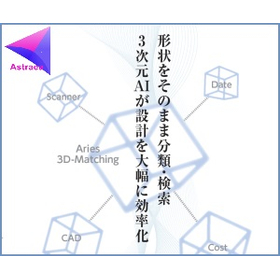Single-cell spotter "c.sight" significantly improves the efficiency of cell line development.
An innovative single-cell spotter realized through inkjet and image processing technology - fluorescence-free, 96 wells in 3 to 7 minutes.
In cell line development and single-cell analysis, issues with traditional limiting dilution and cell sorters, such as injection time, single-cell probability, damage to cells, the effort required for cleaning and setup, and equipment familiarity, have been resolved through the adoption of inkjet and image processing technologies, as well as disposable cartridges. 【Features】 ■ Achieves approximately 90% single-cell injection rate ■ Uses sterilized disposable cartridges ■ Capable of dispensing with a minimum of 5μL of cell suspension ■ Damage-free and no staining required due to cell separation via image processing ■ Eliminates the need for flow path cleaning and equipment adjustments, significantly reducing setup time 【Examples of Applications】 ■ Cell line development ■ Single-cell genomics On-site demo campaign until the end of June! For more details, please contact sales3@microjet.co.jp.
Inquire About This Product
basic information
■Dimensions: W600 × D400 × H240 (desktop size) ■Weight: 30kg ■Can be used outside the safety cabinet due to the adoption of a sealed system ■Built-in control PC ■Included peripherals ・Monitor ・Keyboard ・Mouse ■Power supply: 100-240VAC ■Power consumption: 133W (maximum)
Price range
Delivery Time
Applications/Examples of results
For more details, please refer to the materials or feel free to contact us.
Detailed information
-

Cells with proven results ■Animal cell CHO, RBL, 3T3-FIB, L929 ■Human cancer cell HeLa, CaSki, SiHa, C33a, U2OS ■Human-derived cell iPS, B-cells, Jurkat, Raji, HEK 293, U2OS ■Human-derived primary cell fibroblasts, keratinocytes
-

Principle of Cell Printing By applying inkjet technology used in printers, we analyze the nozzle tip when ejecting cell liquid from the nozzle, counting the number of cells within the area ejected in a single droplet. When there is only one cell, it is directly injected into the well container, achieving the goal of one droplet per cell. In cases of zero or two or more cells, the ejected droplets are collected in the air. This principle is registered as our company's patent.
-

Disposable cartridge It features a disposable cartridge that eliminates the hassle of device adjustments and flow path cleaning for each separation operation. There is no risk of contamination, allowing users to simply replace the cartridge for each cell and immediately start their experiments.
-

Success rate of cell separation The left figure shows the success rate of cell separation in a well plate, with the vertical axis representing the success rate of separating one cell into the well plate and the horizontal axis indicating the evaluated cell names. It is possible to inject one cell into each well with a probability of approximately 90%.
-

Cell survival rate The left figure shows the cell survival rate after single-cell isolation, and colony formation was confirmed in wells where each cell shown on the horizontal axis exceeded 80%.
catalog(7)
Download All Catalogs
Company information
A company that is the only one in the country specialized in supporting research and development of inkjet technology, with expertise in all inkjet elements such as inkjet heads, ejection fluids, and maintenance systems. Rather than being a sales agent or a system integrator that purchases heads, it develops and sells its own heads and devices. This allows for the resolution of various challenges in collaboration with customers. With over 10 years of proven experience in the inkjet research field, it is also well-regarded for its prompt and accurate support.












